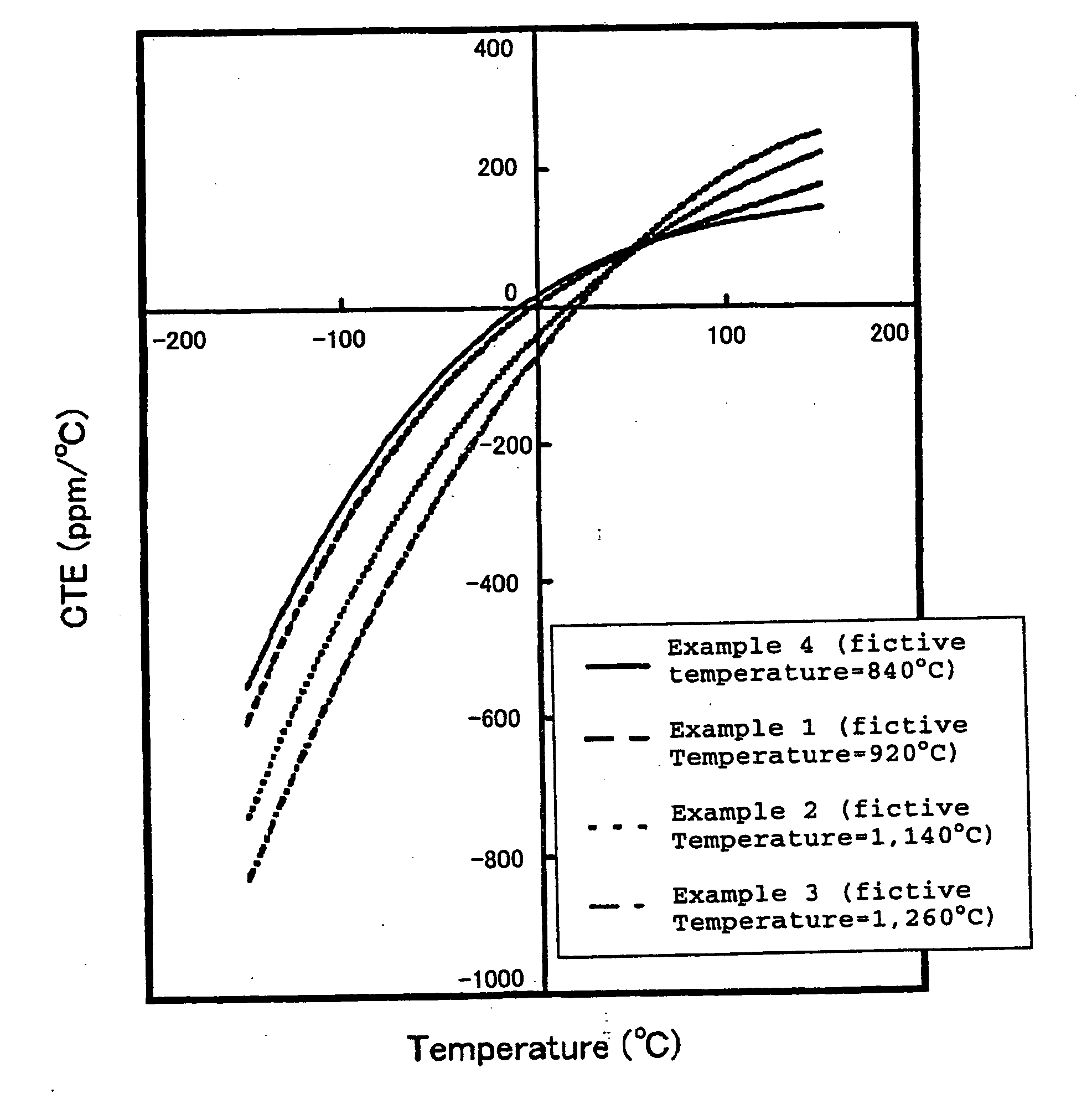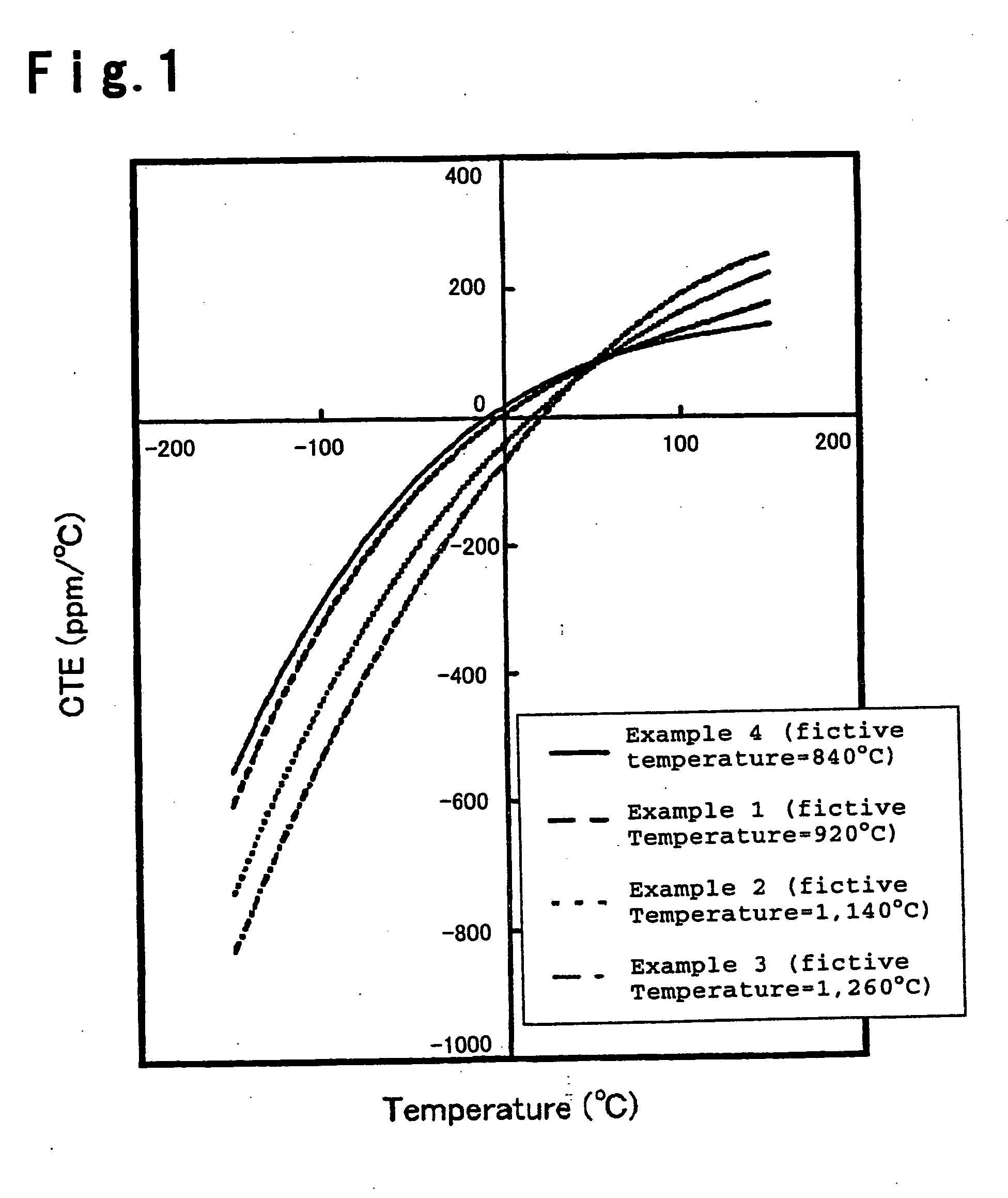Silica glass containing TiO2 and process for its production
- Summary
- Abstract
- Description
- Claims
- Application Information
AI Technical Summary
Benefits of technology
Problems solved by technology
Method used
Image
Examples
example 1
[0055] TiO2—SiO2 glass particles obtained by gasifying TiCl4 and SiCl4 as glass-forming materials for TiO2—SiO2 glass, respectively, then mixing them and feeding them to heat hydrolysis (flame hydrolysis) in oxyhydrogen flame, were deposited and grown on a target to form a porous TiO2—SiO2 glass body having a diameter of 8 cm and a length of 12 cm (step (a)).
[0056] The obtained porous TiO2—SiO2 glass body was heated to 1,550° C. in an atmosphere of 100% He and held at this temperature for 10 hours for vitrification to obtain a vitrified TiO2—SiO2 glass body (step (b))
[0057] The obtained vitrified TiO2—SiO2 glass body was heated to 1,600° C. i.e. higher than the softening point for deadweight transformation and formed into a block shape having a predetermined size to obtain a formed TiO2—SiO2 glass body (step (c))
[0058] The obtained formed TiO2—SiO2 glass body was set in an electric furnace and held at 950° C. for 100 hours. Then, the temperature was lowered to 500° C. at a rate o...
example 2
[0059] In the step (d) in Example 1, the cooling conditions after slicing were changed, and the formed TiO2—SiO2 glass body was set in an electric furnace and held at 1,200° C. for 20 hours. Then, the temperature was lowered to 500° C. at a rate of 5° C. / hr, and then, the glass body was cooled to room temperature. Other than this, in the same manner as in Example 1, TiO2—SiO2 glass was obtained.
example 3
[0060] In the step (d) in Example 1, the cooling conditions after slicing were changed, and the formed TiO2—SiO2 glass body was set in an electric furnace and held at 1,300° C. for 2 hours. Then, the temperature was lowered to500° C. at a rate of 5° C. / hr, and then, the glass body was cooled to room temperature. Other than this, in the same manner as in Example 1, TiO2—SiO2 glass was obtained.
PUM
| Property | Measurement | Unit |
|---|---|---|
| Temperature | aaaaa | aaaaa |
| Temperature | aaaaa | aaaaa |
| Temperature | aaaaa | aaaaa |
Abstract
Description
Claims
Application Information
 Login to View More
Login to View More - R&D
- Intellectual Property
- Life Sciences
- Materials
- Tech Scout
- Unparalleled Data Quality
- Higher Quality Content
- 60% Fewer Hallucinations
Browse by: Latest US Patents, China's latest patents, Technical Efficacy Thesaurus, Application Domain, Technology Topic, Popular Technical Reports.
© 2025 PatSnap. All rights reserved.Legal|Privacy policy|Modern Slavery Act Transparency Statement|Sitemap|About US| Contact US: help@patsnap.com


